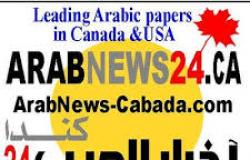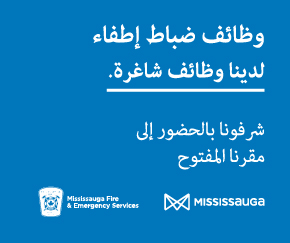اخبار العرب-كندا 24: الخميس 2 مايو 2024 06:38 صباحاً
Internal budget cuts at the Department of National Defence have driven the Canadian Armed Forces to make radical changes to training for fighter pilots and for soldiers destined for Latvia — an overhaul that experts warn could undermine military readiness.
The army is no longer requiring that troops headed for deployment in Eastern Europe take part in a major qualifying exercise at the base in Wainwright, Alta., the department said in a media statement issued after CBC News asked questions.
Instead, the department said, the combined arms training will take place in the Baltic nation, alongside allies, after the troops arrive there.
The air force also announced recently that it will retire its aging fleet of jet trainers and farm out fighter jet qualification instruction to allied nations.
Chief of the Defence Staff Gen. Wayne Eyre, the country's top military commander, defended the decision recently and insisted there will be no erosion of quality among troops and fighter pilots.
Former army commander Andrew Leslie, an ex-Liberal MP, disagreed. The retired lieutenant-general said the combined arms training in Alberta — where soldiers learn to operate in concert with tanks, artillery and aircraft — helped make Canadian troops a cut above the rest and fully prepared for what they might face if Russian troops cross the Latvian border.
Leslie said withholding that level of training until soldiers can exercise with their allies in NATO's multinational brigade — which Canada leads — could be dangerous.
"They're going to have to learn on the job, using other people's equipment and expertise in the country" where they could end up fighting the Russians, said Leslie.
He said the Russians no doubt will take note of the change. "Keep in mind deterrence has to be credible," he added.
Leslie said he's "not aware of any other [NATO] army, which will be deploying troops to the front line of a possible confrontation with Russia, who are not 100 per cent trained according to a variety of battle test standards."
A Canadian soldier fires his machine gun during Exercise Steele Crescendo, which took place outside Riga, Latvia in 2020. (NATO Handout)
Most military experts agree that one of the reasons the Kremlin's initial full-scale invasion of Ukraine in 2022 failed to achieve its objectives is the Russian Army's inability to coordinate infantry, tanks, artillery and aircraft into a seamless operation.
Analysts also agree that Moscow has learned from that experience and Russian troops facing Canadians across the border in Latvia will be battle-hardened.
The changes to training, which will see soldiers prepare themselves at their home bases before deploying overseas, are a consequence of almost $1 billion in internal departmental cuts — money that's being reallocated in some cases to pay for new equipment.
A shortage of money, equipment and people
Defence Minister Bill Blair has insisted that the internal budget changes won't affect readiness and operations.
But Leslie said the changes are being made due to a lack of funds, a lack of working equipment and a lack of people.
"That's what it boils down to," he said. "We're willing to accept the fact that we're deploying troops to Latvia who will not meet the standards of even last year."
Previous Canadian troop rotations in Eastern Europe did go through the combined arms qualification before going to Latvia.
In a recent interview with CBC News, Eyre said the decision to end the training at Wainwright for soldiers bound for Latvia was made partly for quality-of-life reasons.
He said the army believes soldiers can acquire the necessary skills by exercising with allies in the country where they might have to fight — and that eliminating one level of training that requires travel gives troops more time at home with their families.
"It's a combination of ensuring enough training is done but it's done at the right place," said Eyre, who noted that when Canada stationed troops in Germany during the Cold War, the army followed a similar model — minimal workup training at home and a heavy rotation of exercises once in Europe.
"What we're finding was the battle groups, the various units that we're deploying, were spending a lot of time on exercise here at home to get to a very high level, and then going to Latvia and doing much of the same work," he said. "So we take a look at how much training is enough, based on indications and warnings on the threat."
The army will monitor the implementation of the new training regime and adjust where necessary, Eyre said.
"There's many different ways of achieving the readiness that's needed," he added.
A Royal Canadian Air Force CT-155 Hawk from 419 Tactical Fighter (Training) Squadron takes off during Exercise MAPLE FLAG 51 on June 19, 2018 at 4 Wing, Cold Lake, Alta. (Cpl. Manuela Berger/Royal Canadian Air Force)
But the army is not the only area of concern.
On March 8, 2024, the Royal Canadian Air Force quietly announced it would retire its fleet of CT-155 Hawk advanced trainer aircraft and change the way it trains fixed-wing fighter pilots.
The trainer was the last stop before student pilots were allowed to begin flying the country's CF-18 Hornets.
The air force's planned transition to the F-35 fighters had put the future of the Hawk trainer in doubt already, but their unexpected retirement means the country's fast jet training program is now on hold.
To fill the void, the RCAF is turning to the U.S, Italy and Finland, all of which host similar fighter lead-in training programs.
It's a big mistake, said former air force lieutenant-colonel and F-35 test pilot Billie Flynn.
"The decision of the RCAF to outsource fighter pilot training came at the expense of a sovereign program that emphasizes the very skills that young Fifth Generation pilots need to safely fly that aircraft [F-35] now and in the future," Flynn told CBC News.
A U.S. Marine Corps F-35B Lightning II takes part in an aerial display during an airshow in Singapore on Feb. 15, 2022. (Suhaimi Abdullah/The Associated Press)
He said the allied programs are generic and don't offer the kind of specific, individual instruction that made Canadian fighter pilots a unique and skilled breed.
"The RCAF is electing to offshore this training, and in the United States, what they're going to get is generic cookie-cutter training that works for the German air force, the Dutch, the Danes, the Norwegians and the United States Air Force," he said.
Flynn, who commanded 441 Tactical Fighter Squadron in Cold Lake, Alta. in the 1990s and flew combat missions over Kosovo, described the U.S. training as a regimented and rules-based program that downplays independent pilot thinking.
"That works in the biggest, most powerful air force in the world. That does not work in the RCAF, where we need warriors to think, to be agile and to assume responsibility in the earliest part of their career," he said.
The effect of the decision, he said, will be that commanders will have to teach pilots to think creatively once they're back from training abroad, and the graduates "will be that much further behind in those airmanship skills that are so essential, and that we expect from Canadian fighter pilots."
Eyre disagrees and said that as the air force introduces a series of new fleets, "pilot training is being adjusted accordingly."
The defence chief said the air force is increasing its use of simulators, which "greatly accelerates the road to proficiency."
تم ادراج الخبر والعهده على المصدر، الرجاء الكتابة الينا لاي توضبح - برجاء اخبارنا بريديا عن خروقات لحقوق النشر للغير






